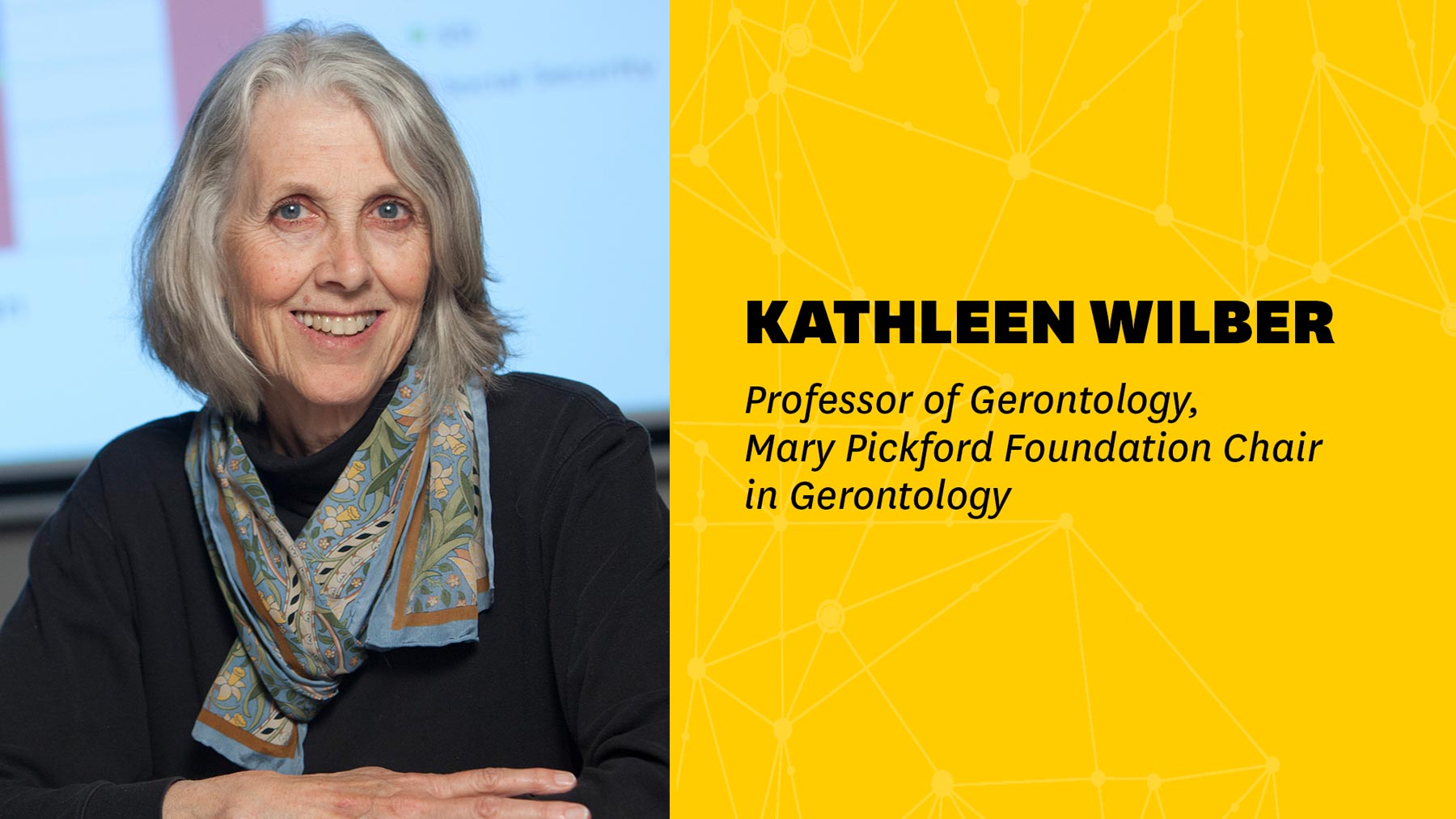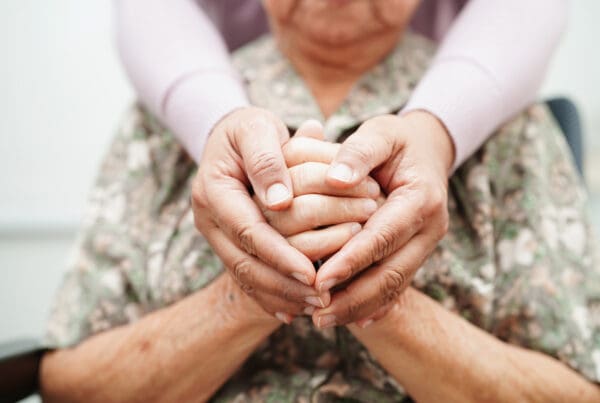Kate Wilber is the Mary Pickford Chair in Gerontology and director of the Secure Old Age Lab at the USC Leonard Davis School. She’s also the co-director of the National Center on Elder Abuse, which is housed at the Keck School of Medicine of USC. She recently spoke to George Shannon about her research, including her work exploring ways to provide long-term care services and supports that allow older adults to be as independent as possible and the challenges and opportunities that technology provides in this area.
Quotes from this episode
On building on lessons learned during the pandemic
“I think a lot of what we saw were challenges that we already knew were there – how fragmented services are, how older adults can be at risk of isolation, how important the home community-based services and programs and opportunities to interact are for everybody. And I think showing the importance of community, which we didn’t have during the pandemic, except a bit on social media and phone calls and maybe people getting together outside. So the key question is, how do we take the learning and the recognition of what we already knew into the future to build on these important lessons, to do better with our aging service delivery? I was going to say our aging service delivery system, but that’s a huge problem. There isn’t a system; there’s just a lot of different components of a system.”
On innovations in long-term care and supports
“We have to prepare for an aging population. And until recently I felt like we didn’t do that great a job preparing, but I see a lot of exciting innovations, which to some extent may have been jump-started a little bit because of the challenges of the pandemic. We have a variety of models of senior living and I think we’re going to see more innovation there or the innovations that have been developed take off because they did better in the pandemic too. So if we look at what kind of care was best for older adults who maybe were isolated or need long term services and supports during the pandemic, how do we build on that? And how do we make sure that we translate what we know into reasonable programs and policies.”
On barriers to implementing technology solutions
“People not only need to have some kind of device. They need to have broadband, it needs to work. And we’ve seen that in some parts of the country, especially in rural areas, broadband it’s not available. All the things we take for granted, electricity, water, et cetera, how much is this an essential service that we’ll do a better job providing across the nation in areas where it doesn’t exist very effectively now. And then as I said, how do we help people learn? And what are the particular cultural competencies required for trainers? What are the different uses that people want? This gets back to being person-centered and engaging the people that will be the end-user users and understanding what’s most effective for them.
There are still a fairly large proportion of older adults who don’t have access to any sort of computer; some have smartphones. And there is this notion, I guess, if we build it, they will come. Or if we give it to them, they’ll use it, it would be the way of talking about that. But there’s a variety of barriers. And if you hand somebody a box with a computer in it and say, ‘There you go, you’re now going to go on the other side, the right side of the digital divide.’ They’re not. So what can we learn about how to help people use technology in a way that is useful for them effective, meaningful?”
On telehealth
“So this will be a time saver. I think that’s pretty clear, but the nursing facilities have to invest in it. The staff have to invest in it. They have to learn how to do it. And one of the things we’re seeing is they thought the residents would be the most resistant and they’re not. They’re like, ’Okay, if I can see my doctor this way, fine.’ But I think the question is, how is it used, where is it most effective and where is it not a good replacement for a physician coming to the facility? So, there’s a fair amount of literature developing on this, but I think there’s so many exciting innovations that are rolling out and we need to build on what we’re learning and make them better and be more effective in the next generation of telehealth and facilities and helping people on the digital divide connect. So all these things are really exciting opportunities to learn how to connect.”
On person-centered care
“So the idea behind person-centered care is that people have different needs. Of course, they also have different preferences, different preferences for care and for services and for supports and for contributing and giving back and primarily and mostly as with all of us, for controlling their lives and the decisions that are made. So person-centered care recognizes that the power should live with the individual in terms of the ability to make decisions about care informed decisions. But I think sometimes, we, as professionals can see, oh, this would be best for this person. And professionals are extremely busy also. And so it kind of overlooks sometimes the person’s needs and preferences and working in areas like elder mistreatment and elder self-neglect. A lot of times people have legitimate reasons for wanting things that we don’t necessarily think would be the best choice, but person-centered care asks us to really get in touch with what’s behind those preferences. And to what extent can we ethically honor them and this is something I see the field doing a much better job thinking about and working on and great things have been written. And the American Geriatric Society a few years ago had an expert panel come together and develop a definition and sort of protocols for this. And I think that’s really moving the field.
One more thing I’ll say is that ageism contributes here. So we make assumptions about older people that they can’t express their preferences adequately. And providers talk to the caregiver, not the older person. Or they say this is what needs to be done. So I think there’s also a culture change of recognizing that it’s about the older person. And we start with the older person, and that’s not to say that there aren’t age-related increased likelihoods, but not inevitabilities of memory issues and things of that kind. And so we need to be clear that the person has the capacity to express their preferences, but we start with person-centered. The elder is the person who whatever is happening is happening on behalf of, or for, or with. And that’s where we start.”
On students
“That’s our future. … Our legacy is you see the students that go through our program and they’re very excited about learning and they bring innovation and enthusiasm, and then they go out and do wonderful things and they become the leaders of the field. And you could see that across the board in so many areas.”





